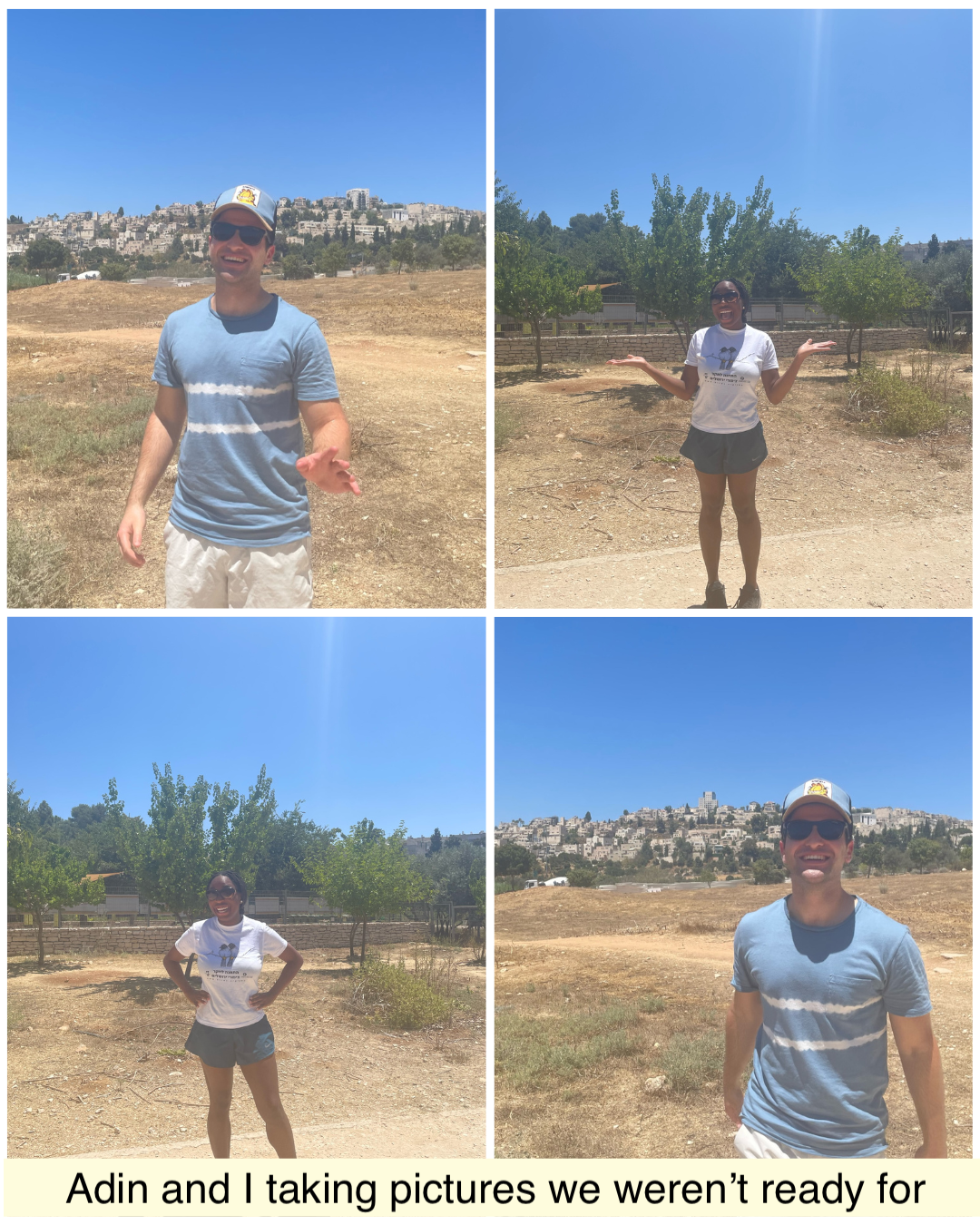
02 Aug Adventures from SPNI, Intern Edition 4
By Luke Finkelstein
Throughout the summer, Barry repeatedly told us how Gazelle Valley was one of his favorite places, and he wanted us to see it. Despite his best efforts, the weeks rolled on and still we hadn’t gone: scheduling challenges, political demonstrations, and other trips stepped forward, and by my last week it seemed I might not go at all. But then, Barry’s enthusiasm paid off, and on my fourth-to-last day we were on the Jerusalem roads with Barry at the wheel.
“I just love the gazelles,” Barry said again, ten minutes out from the site.
“And they love you, too,” I said, smiling. Adin backed me up. Barry laughed.
Our good gazelle banter continued:
“Are they excited to see us?” I asked Barry a few moments later.
Without skipping a beat, he said, “oh, yes, they’re so excited, in fact, that they’ve started to hide. So if you don’t see them, that’s why: because they’re so excited.”
Although we saw a lot of gazelles, they were also quick to run away, so their excitement levels were ambiguous.
But they did send Barry a Valentine’s Card.
Gazelle Valley is an eight-year-old urban nature park, free to enter. Throughout the 20th century, speedy development in Jerusalem hemmed in the gazelles to an ever-dwindling sliver of land. Haaretz called this “Jerusalem’s last green lung.” Abreast of a highway and homes, and prey to dogs and jackals, the gazelle population plummeted to a startling three individuals. Development plans continued, and this Jerusalem herd was about to be nothing more than a historical artifact.
In an inspiring turn-of-events, the local community rallied together, and with SPNI’s help succeeded in halting development in exchange for this gazelle paradise. Now there are about 100 healthy mountain gazelles here, which are still an endangered species. However, the population is doing so well that some are being relocated to the Golan and the Jerusalem hills, under the watchful eyes of veterinarians and other nature professionals.
Barry arranged for us to meet Faygle, the Operations and Field Manager of the park. In her warm and energetic way, she described her job to us as the “eyes, ears, and nose of the valley.” We got an hour behind-the-scenes tour with her beneath the hot morning sun. Despite the name of the park, I told Faygle, I was still amazed every time I saw a gazelle. They were just so quick and beautiful.
“And quiet!” said Faygle, who had been working there half a year. She, too, admitted she was always a bit surprised when a gazelle wandered by. That day, the majestic, lithe animals were like out of a storybook. They frolicked in the dry summer grasses, with their brown supple bodies, long necks, white rears, and curved black horns.
We approached the pond, where birds, turtles, and fish bathed, including one mallard with an attitude. David Attenborough’s crew had just filmed here to record some swifts, and Adin and I felt like real nature explorers. Then we carried on: farther and farther along the trail, beneath yellow ropes that sectioned off the area from the public, past gazelle droppings, beside glistening spiderwebs. We were really V.I.P.s now! The sun was hot on our necks, hot in the air, dampening sound. Fruit trees, a tortoise, and more gazelles slipped in and out of view. When at last we got back, we were eager for a cool roof over our heads. A quick water break restored us, and our conversation continued there, learning more from Faygle and the national service members.
“Finding the balance between nature and people’s needs can be both successful and frustrating in a public park” said Faygle, when I asked how Gazelle Valley being a public park affected the work.
She gave a few examples of these frustrations: one kid on a school trip found a dead snake and started swinging it around. When asked to leave it alone, the teacher responded outrageously, “but he found it!” Another time, a man called the police on Faygle for preventing him from touching a gazelle. They’ve had rowdy teens, people dropping off invasive species, people leaving behind inappropriately raised animals (for example, that mallard with an attitude; she’s being sent to a petting zoo in the coming weeks, where everyone will be much happier—including the mallard), and other unfortunate less-than-civil visitors.
But then Faygle smiled the great smile that’s been passed down generations, that one of patience, compassion, and a holistic worldview. She started listing off the teens who come here with paints and easels, drawing the landscape. Still others come for the birds, or the rocks, or the family boardgames. Then there was a story of a Haredi group that asked the most intelligent, thoughtful questions, and the joy of sharing those responses. And of course, one can’t forget the origin of the park, that it was the people who came together to save the gazelles in the first place.
That doesn’t reduce the frustrations, and people like Faygle have to stay vigilant. At the same time, it’s nice to see that in spite of everything, the successes come so readily to mind.
If you would also like to live and breathe these places fully, I encourage you to check out Nature Israel’s upcoming November trip, which you can find here.
Meanwhile, I’m thrilled to be on this adventure, and for you to be joining me!



